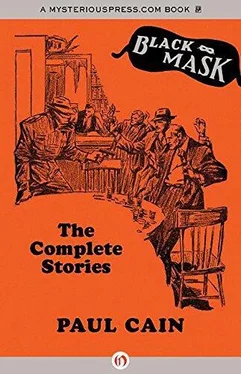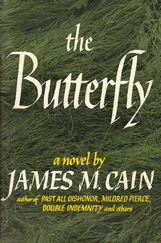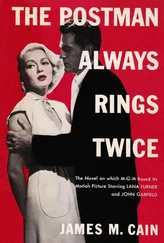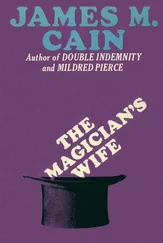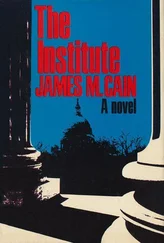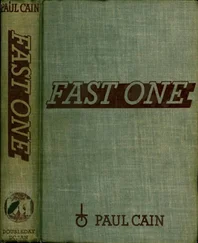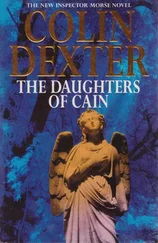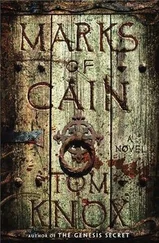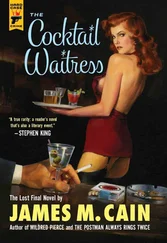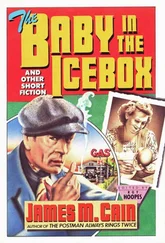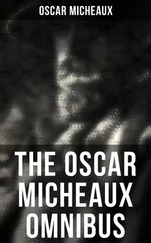Cain’s dominant character is the incorrigible gambler, the risk-taker who lives and dies by his hunches. Criminals and their pursuers have that trait in common, and in Cain’s fiction, it’s seldom clear which is which. Cain makes the most of this irony in “Hunch” (March 1934), where the seasoned detective Cy Brennan follows his nose down a blind alley, taking the reader right along with him:
She was staring at him with wide hard eyes: one eyebrow was arched to a thin skeptical line, her red mouth curved humorously upward at the corners. She said with broad, biting sarcasm: “The old Brennan hunches — they never miss...”
Keith Alan Deutsch addresses the thrill-seeking impulse inherent to so many of Cain’s characters in his afterword to Fast One , and shrewdly identifies its effect; Kells and his ilk confront us with a bracing, “clean” amorality. They are indeed the true forerunners of both Lee Marvin in Point Blank (1967) and Mel Gibson in Lethal Weapon (1987).
Cain’s virtuosity extends to his perfectly pitched depictions of disparate social strata. His narratives move effortlessly from the Roosevelt Hotel to a dirty flophouse, and his characters react to these shifts in various ways. “St. Nick” Green circulates among “legman, Park Avenue debutantes, pickpockets, touts, bank robbers and bank presidents, wardheelers, and international confidence men,” but remains a parvenu , spending “more of his time in night courts than in nightclubs.” Whereas Druse, a mysterious retired judge in “Pigeon Blood” (November 1933), exudes an elegance and sophistication alien to most of Cain’s protagonists: “Druse leaned forward. ‘I am not a fixer,’ he said. ‘My acquaintance is wide and varied — I am fortunate in being able to wield certain influences.’” There is a great deal of reserve in Druse’s speech; it may be the reticence of a man guarding old wounds.
Only a writer freely exploring the boundaries of his genre could have produced such a variety of stories in so short a time. It is, in a sense, fitting that the man behind this protean achievement was himself so protean.
On November 2, 1986 the Los Angeles Times ran the following ad in the classifieds:
Information Sought
I am writing a biography of the
hard-boiled novelist Paul Cain
(a.k.a. Peter Ruric/George Sims),
author of the classic Los Angeles
gangster novel “Fast One” (1933).
I would appreciate hearing from
anyone with letters or biographical
information.
DAVID A. BOWMAN
Bowman never did produce his book-length biography. He could only scrape so much together, and much of what he found couldn’t be verified. Along with essays by E. R. Hagemann and Peter Gunn, and book chapters by David E. Wilt and Woody Haut, Bowman’s introduction to the 1987 Black Lizard edition of Fast One is still one of the best sources on Cain’s life. Recent work by Lynn F. Myers Jr. and Max Allan Collins has added to Bowman’s portrait. And yet, thanks largely to his own efforts, Cain has remained a cipher.
The photo that originally appeared on Fast One ’s jacket is a high-angle, ¾ portrait of Cain’s bearded face, with a diagonal white bar across his eyes. It’s the only published picture we have of him, and might as well have been taken by Man Ray. The white band is an obvious but striking feature. So is his first self-obliterating, deflective, yet spasmodically revealing autobiographical sketch, which begins:
PAUL CAIN
isn’t his real name.
is slender, blond, usually bearded.
has wasted his first thirty years as a
matter of course and principle; wan-
dered over South America, Europe,
northern Africa and the Near East;
been a buson’s-mate, Dada painter,
gambler, and a “no”-man in Holly-
wood.
likes Mercedes motor-cars, peanut
butter, Gstaad, and phonograph
records of Leslie Hutchinson, Scotch
whiskey, some of the paintings of
Chirico, gardenias, vegetables and
sour cream, Garbo, Richebourg
1904, and Little Pam.
dislikes parsnips, the color pink,
sopranos, men who wear white silk
sox, backgammon, cigars and a great
many men, women, and children.
Cain’s lies — and many were to follow in subsequent autobiographical statements — form a predictable pattern: unlikely ports of call, unbelievable occupations, and preposterous literary accomplishments. He never completed “a new novel of crime and blood and thunder, tentatively titled Three in the Dark ,” and no library in the world holds “a melodramatic farce” titled Young Man Sees God , or any of his other supposed titles: Hypersensualism: A Practical Philosophy for Acrobats; Syncopaen; The Naked Man; Advertisement for Death; Broad; The Cock-Eyed Angel ; or Seven Men Named Caesar . Nor is it likely that anyone will ever track down the long-lost acetate reels of Cain’s “motion picture to end motion pictures entitled Grapefruit and You ,” which somehow calls to mind the Gerry Kells-like Jimmy Cagney flattening a grapefruit on Mae Clarke’s face in The Public Enemy (1931) — except you’re Mae Clarke. And of course Fast One , too, might just be a gag.
Cain was, in fact, an Iowan named George Caryl Sims, born in Des Moines on May 30, 1902, to one-time police detective and drugstore owner William Dow Sims and his wife Eva, née Freberg, the daughter of Swedish immigrants. [6] See Lynn F. Myers, Jr. and Max Allan Collins, “Chasing Shadows: The Life of Paul Cain,” in The Complete Slayers (Lakewood, CO: Centipede Press, 2011), 13–17, for information on Sims’s ancestry and early childhood.
The exact date of his family’s relocation to Los Angeles remains unknown; the young Sims and his mother, who was by then divorced, probably made the move in 1921, while his father and paternal grandfather, George C. Sims, a Union veteran of the Civil War, joined them a few years later. Although Myers and Collins had found William Sims listed as a salesman in the 1924 Des Moines City Directory, the 1923 Los Angeles City Directory has William D. Sims, George C. Sims, and George C. Sims, “Jr.” residing at 1201 June St., while Mrs. Eva W. Sims is described as a stenographer at 6026-D Hollywood Blvd. [7] Myers and Collins, 17; Los Angeles City Directory (1923), 2810.
One can guess at the reasons for the family’s exodus from Des Moines to “double Dubuque,” as H. L. Mencken dubbed it. Boom-time Los Angeles was a magnet for well-heeled Midwesterners like the elder George C. Sims. Louis Adamic described these “Folks” of the ’20s — evocatively and not without sympathy — in his autobiography Laughing in the Jungle (1932):
They were pioneers back in Ioway and Nebraska. No doubt they swindled a little, but they always prayed a little, too, or maybe a great deal. And they paid taxes and raised young ones. They are old and rheumatic. They sold out their farms and businesses in the Middle West and wherever they used to live, and now they are here in California — sunny California — to rest and regain their vigor, enjoy climate, look at pretty scenery, live in little bungalows with a palm-tree or banana plant out front, and eat in cafeterias. Toil-broken and bleached out, they flock to Los Angeles, fugitives from the simple, inexorable justice of life, from hard labor and drudgery, from cold winters and blistering summers of the prairies... [8] Louis Adamic, Laughing in the Jungle: The Autobiography of an Immigrant in America (New York: Harper & Brothers, 1932), 218.
Читать дальше
